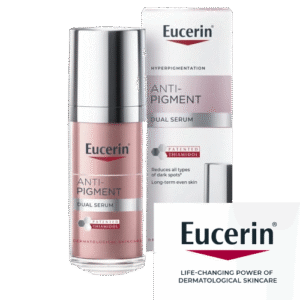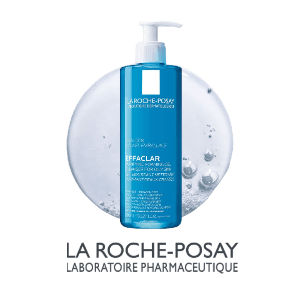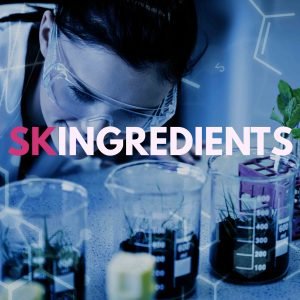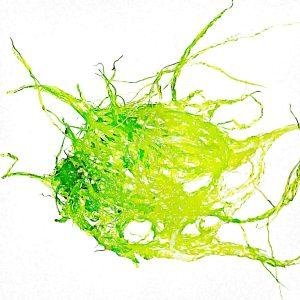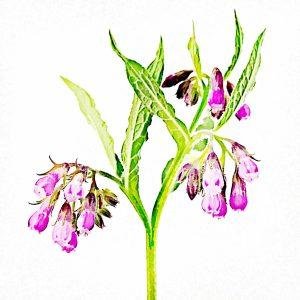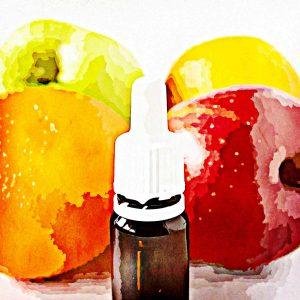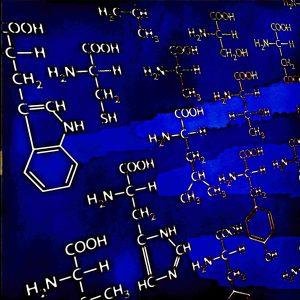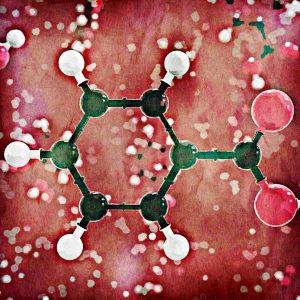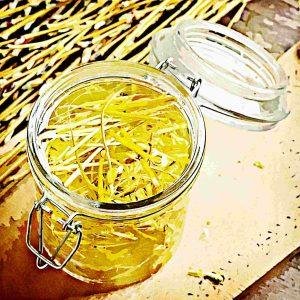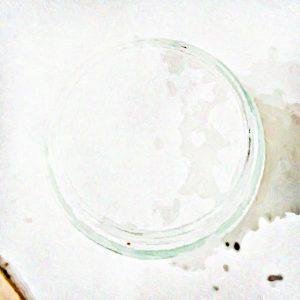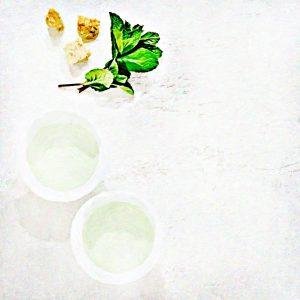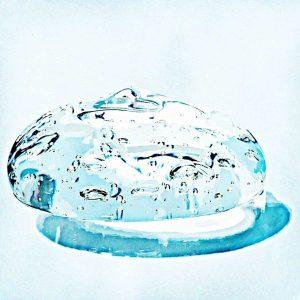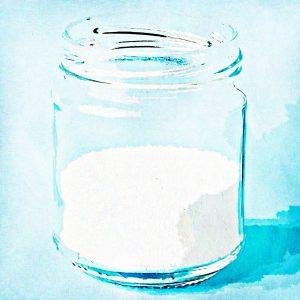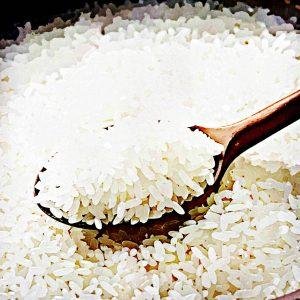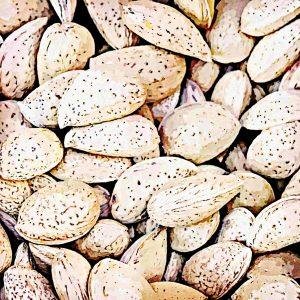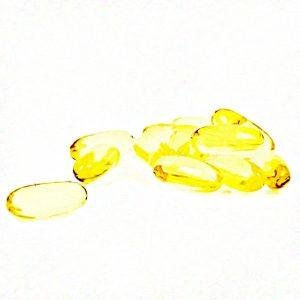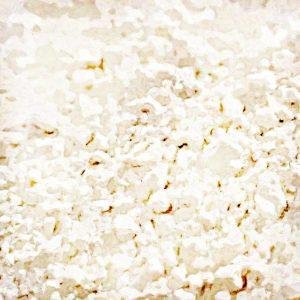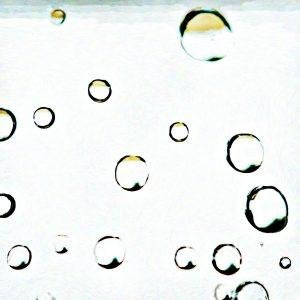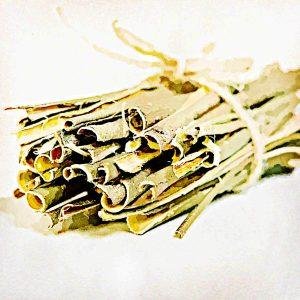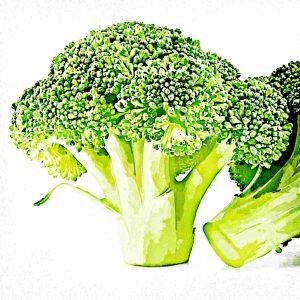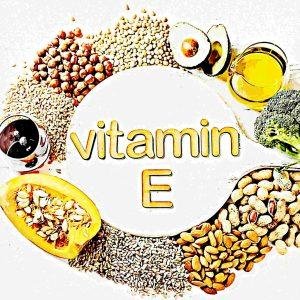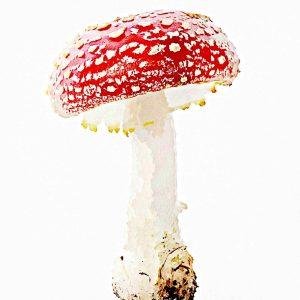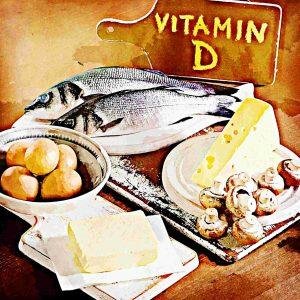SK INGREDIENTS
SKINCARE INGREDIENTS
Find out what is in your skincare!
Consumers are becoming increasingly savvy at looking at what is in their skincare and often want to choose products that contain, or do not contain, specific ingredients. Many skincare products have a wealth of scientific evidence for their use in improving specific problems and having benefits on skin health. At Cosmedic Online, we believe that you should choose ingredients that meet your own unique skin needs and choose products that will meet those requirements. Become a skintellectual!
Enter the name of the ingredient you wish to find in our shop
A
ACETONE
Acetone is a liquid solvent and is commonly used in products such as nail polish. It is a colourless, flammable, strong scented liquid. Your body also makes this chemical when it breaks down fat. Acetone is also used in other skincare products and has benefits including antimicrobial properties, helping prevent acne breakouts, as well as controlling oil production, which can be beneficial in oily skin types. However, overuse of acetone can cause dryness and irritation so it should be used sparingly and followed up with a moisturiser. Acetone is a ketone.
Key Benefits
- Solvent
- Removes grease, paint, varnish
- Anti-microbial
- Helps control oil production
- May help treat acne
AHNFELTIA CONCINNA EXTRACT
Ahnfelta concinna extract, also known as a red marine algae extract is a nutrient-rich mineral derived from seaweed algae of the Rhodophyta group found in the waters of the Pacific Ocean. It contains proteoglycans, peptides, polypeptides and glycans. It stimulates cell turnover and circulation as well as containing high levels of the unusual amino acid, 4-hydroxyproline, an essential ingredient of collagen. It is moisturising, firming, soothing, anti-ageing and contains natural pigments that can help to brighten the skin and even out skin tone.
Key Benefits
- Amino-acids
- Aids collagen production
- Brightening
- Firming
ALFALFA EXTRACT
Alfalfa extract is derived from the leaves and stems of the alfalfa plant, which is a member of the pea family. It is rich in biotin, vitamins (A, B, C, E and K), amino acids and minerals and contains anti-inflammatory compounds that can help soothe and calm irritated skin. Alfalfa extract is also rich in antioxidants, preventing free radical damage to the skin and premature ageing. It improves wound healing and reduces inflammation encouraging its use in cuts, bruises and other minor skin injuries.
Key Benefits
- Antioxidant
- Vitamins
- Amino acids
- Wound healing
ALCOHOL
Alcohol is often used in skincare products as it promotes the delivery of ingredients such as retinol and Vitamin C to penetrate the superficial layers of the skin. However, alcohol can have a drying effect on the skin as it disappears immediately on application and the benefits may outweigh the potential negative effects. Alcohol is an effective antibacterial agent and kills bacteria on the skin, it is also an astringent making the skin feel tighter and firmer and helps penetration for other ingredients. Finally, alcohol can help to control excessive oil production. Excessive use can cause irritation and disrupt the normal skin barrier.
Key Benefits
- Anti-bacterial
- Astringent
- Aids deeper penetration
- Control excess oil production
ALGAE
Key Benefits
- Detoxification
- Regulates sebum production
- Hydration
- Anti-ageing
ALLANTOIN
Allantoin is a chemical compound produced from uric acid and is found naturally in our own bodies as well as in many other animals and plants and commonly derived from the comfrey plant. It has been used in skincare and shampoos for many years and has an excellent safety profile. Its main use is for moisturising and soothing the skin. It is a humectant, meaning it can attract and retain moisture as well as being soothing and calming. Allantoin also aids in the wound healing process.
Key Benefits
- Moisturising
- Soothing
- Aids wound healing
ALOE VERA
Aloe vera is a succulent plant with over 500 know species and has been used for thousands of years for its medicinal properties. It is a natural moisturiser, containing a high concentration of water and has anti-inflammatory properties, helping to reduce redness and inflammation and commonly used to treat sunburn. Aloe vera is known most for its wound healing properties, speeding up the healing process and also reducing the appearance of scars. Finally, aloe vera is known to have antibacterial properties, reducing inflammation and killing bacteria that are associated with acne.
Key Benefits
- Wound healing
- Anti-bacterial
- Moisturising
- Used for sunburn
ALPHA HYDROXY ACIDS (AHAs)
AHAs, or alpha hydroxy acids, are a group of water-soluble acids that are commonly used in skincare products for their exfoliating and skin-renewing properties. AHAs are a group of acids that occur naturally in fruits, sugar cane and milk and are an effective exfoliating acid that can be used to treat acne, scars, sun-damage and hyperpigmentation. They must be used in conjunction with a sunscreen due to their strong exfoliating action and removing dead cells which provide protection from the sun’s rays but cause the skin to look dull and lack of lustre. AHAs also increase skin cell turnover leading to a more youthful and radiant complexion and improved skin texture.
View: Glycolic acid, Citric acid, Mandelic acid and Lactic acid.
Key Benefits
- Exfoliation
- Increased cell turnover
- Anti-ageing
- Improved skin tone and texture
AMINO ACIDs
Amino acids are the building blocks of proteins and play an important role in the health and function of our skin. They are naturally occurring humectants, improving the moisture of the skin, and reduce the signs of ageing by promoting the production of collagen, making our skin plumper and firmer. Amino acids help to maintain the skin’s barrier and aids natural healing processes and reduces inflammation. Examples of amino acids that can be found in skincare includes glycine (moisturising), lysine (promotes collagen synthesis), proline (improves skin elasticity), arginine (healing and repair) and glutamine (barrier protection). The best sources of amino acids are found in animal proteins such as beef, poultry and eggs. Animal proteins are the most easily absorbed and used by your body.
View: Alfalfa extract, Ahnfelta concinna extract and Serine.
Key Benefits
- Hydration
- Increases collagen production
- Healing and repair
- Barrier protection
AQUA
Aqua, also known as water is an odourless, transparent liquid that is one of the most common ingredients in skincare. An average adult body is made up of approximately 60% water and the skin contains roughly 64% water. Aqua is commonly the first ingredient listed on a cosmetic product, meaning this is the primary ingredient. It serves as a base for many formulations and helps to deliver active ingredients into the skin. Water is also essential for hydration, cleaning, cooling and penetration in skincare. It is important to note that the quality of water used can vary and some products can contain impurities or minerals that could be detrimental to the skin, using purified or distilled water ensures a higher quality product.
Key Benefits
- Hydration
- Cleaning
- Cooling
- Penetration
ARBUTIN
Arbutin is a natural skin-lightening ingredient that has gained popularity in recent years as a safer alternative to hydroquinone, a chemical commonly used in skin lightening products. Arbutin is derived from the leaves of several different plants, including bearberry, blueberry, and cranberry. It can fade age spots, scars and melasma and help in preventing future pigmentation developing. It is a tyrosinase inhibitor and better tolerated than hydroquinone. Finally, arbutin also has anti-inflammatory and antioxidant properties. Some studies have suggested that arbutin may have potential side-effects and do not recommend its use during pregnancy or breastfeeding.
Key Benefits
- Skin lightening
- Fades ages spots and pigment
- Calming
- Gentle than hydroquinone
ASCORBIC ACID
This is the most common and well-known form of vitamin C. It is a water-soluble form of vitamin C that is highly effective at brightening the skin and reducing the appearance of fine lines and wrinkles. It is also a potent antioxidant that can help to protect the skin against UV damage. However, L-ascorbic acid can be unstable and may oxidise quickly, leading to a decrease in its effectiveness. Serums containing L-ascorbic acid are often found in light protective bottles.
Key Benefits
- Powerful antioxidant
- Brightening
- Aids repair
- Increases cell turnover
- Helps prevent sun damage
ASCORBYL PALMITATE
This is a fat-soluble form of Vitamin C that is often used in anti-aging skincare products. It is more stable than L-ascorbic acid, meaning that it has a longer shelf life and is less likely to oxidise and can also penetrate deeper into the skin. It can help to boost collagen production and improve skin elasticity.
Key Benefits
- Powerful antioxidant
- Reduces fine lines
- Fat soluble
- More stable
- Deeper penetration
ASTAXANTHIN
Astaxanthin is a carotenoid pigment that produces the pinky red colour in salmon, lobsters and flamingos. Astaxanthin is an antioxidant derived from various seafood and algae that is famed for its powerful antioxidant properties. One of the most significant benefits is its ability to protect the skin from damage caused by UV radiation, neutralising free radicals and protecting against UV-induced DNA damage. Astaxanthin is also a natural source of vitamins and minerals, including Vitamin E, Vitamin C and beta-carotene, providing anti-inflammatory and hydration benefits.
Key Benefits
- Powerful antioxidant
- Protects against UV damage
- Source of Vitamins and minerals
- Anti-inflammatory
AZELAIC ACID
Azelaic acid is a naturally occurring acid found in wheat and barley, it has anti-inflammatory properties making it effective for treating acne and rosacea and the prevention of further outbreaks. It is an indirect inhibitor of tyrosinase, the enzyme responsible for producing melanin, making it useful for the treatment of pigmentation problems, dark spots, melasma or post-inflammatory hyperpigmentation. Azelaic acid has moisturising properties and provides a gentle alternative to retinoids and hydroquinone.
Key Benefits
- Helps treat pigmentation
- Anti-inflammatory
- Gentle on the skin
- Good for acne
B
BAKUCHIOL
Bakuchiol is a relatively new vegan-friendly skincare ingredient in the world of skincare, but it has been gaining popularity in recent years due to its ability to provide similar benefits to retinol without the potential side effects. It is a natural, plant-derived ingredient that is derived from the seeds and leaves of the Psoralea Corylifia plant, native to India and China. Bakuchiol was traditionally used in Chinese and Ayurvedic medicine. This powerful antioxidant is sometimes found in skincare for breakout prone skin due to its soothing properties as well as stimulating the production of collagen and elastin in the skin, leading to an improvement in lines and wrinkles.
Key Benefits
- Increases collagen production
- Improves fine lines and wrinkles
- Antioxidant
- Gentle alternative to retinol
BENZOIC ACID
Benzoic acid is a white crystalline powder that is soluble in water, alcohol and ether and is used to treat skin inflammation in burns, bites and eczema as well as acne and other skin blemishes. It is a type of beta hydroxy acid (BHA) which means it can penetrate deeply into the pores to help remove dead skin cells, dirt and other impurities. Benzoic acid is antimicrobial, helping to reduce acne-causing bacteria. However, benzoic acid can be irritating to some people with sensitive skin and should be used with caution.
Key Benefits
- Antimicrobial
- Used to treat acne
- Reduces inflammation
- BHA properties
BENZOYL PEROXIDE
Benzoyl peroxide is an antiseptic that reduces the acne-causing bacteria and has been noted to be the most effective acne fighting ingredient without the need for a medical prescription, generally available at strengths of between 2.5-10%. Inflammatory acne is best suited to benzoyl peroxide to stop the breakout at its source. It works by penetrating the skin’s pores and releases oxygen, which helps to kill the bacteria that cause acne. It also helps to dry out oil, further improving acne. However, it also has some drawbacks, it can be quite harsh on the skin, causing dryness, redness and irritation and can lead to bleaching of clothing and hair, so it is important to be allow it to fully absorb before coming into contact with fabrics. Rarely, benzoyl peroxide can cause an allergic reaction.
Key Benefits
- Highly effective acne treatment
- Antibacterial
- Helps regulate sebum
- Bleaching
BENZYL ALCOHOL
Benzyl alcohol is commonly used in skincare and considered a safe ingredient, used as a preservative and solvent, preventing the growth of bacteria, mould and yeast. It is a clear liquid with a mild, but pleasant, aroma and is an an organic alcohol with antibacterial properties. One of the benefits, is its mildness, meaning it is well tolerated, even by those with sensitive skin. However, it can cause dryness or even allergic reactions in some individuals.
Key Benefits
- Preservative
- Solvent
- Fragrant
- Antimicrobial
BETA CAROTENE
Beta-carotene is a strong plant pigment that is found in many fruits and vegetables, including carrots, sweet potatoes, and leafy greens. It is a precursor to vitamin A, and when consumed in the diet, it is converted into vitamin A in the body. Beta-carotene is also commonly used in skincare products due to its antioxidant and anti-inflammatory properties. Beta-carotene is a powerful antioxidant that helps to protect the skin from free radical damage caused by environmental stressors such as pollution and UV radiation. It also has anti-inflammatory properties, which can help to reduce redness and inflammation in the skin. Beta-carotene is often included in skincare products to help improve skin tone and texture, reduce the appearance of fine lines and wrinkles, and promote overall skin health.
Key Benefits
- Gentle form of Vitamin A
- Ideal for lines and wrinkles
- Anti-ageing
- Collagen production
- Treatment of acne
BETA HYDROXY ACIDS (BHAs)
BHA’s are powerful exfoliants that can deeply penetrate the skin, unclogging congested pores and are commonly used for acne-prone skin types. They are also exfoliators, working by dissolving the ‘glue’ that holds dead skin cells together. BHA’s can also be used to reduce the over-production of sebum. Unlike AHAs which are water soluble, BHAs are oil soluble. The most common BHA used in skincare products is salicylic acid, obtained from the bark of the Willow tree.
View: Salicylic acid, Salix alba and Benzoic acid
Key Benefits
- Exfoliation
- Unclogs pores
- Good for acne-prone skin
- Reduces sebum production
BIOTIN
Biotin, also known as vitamin B7 or H, is a water-soluble vitamin that plays a crucial role in maintaining healthy skin, hair and nails. While biotin is widely recognised for its benefits when taken orally as a supplement, it also has potential benefits when applied topically to the skin. It helps support the health and strength of the skin barrier, improves hydration by supporting the production of ceramides and also has anti-inflammatory properties which helps sooth and calm irritated skin so is particularly popular for those with sensitive skin types. Biotin is found naturally in foods such as eggs, milk and bananas.
Key Benefits
- Improves hydration
- Strengthens the skin barrier
- Anti-inflammatory
- Benefits for hair and nails
BROMELAIN
Bromelain is a powerful enzyme extracted from pineapples that helps to gently exfoliate the skin, leading to a brighter and smoother complexion, and has gained popularity as a natural ingredient in skincare. Bromelain has also shown to have anti-inflammatory properties which can be beneficial for a range of skin concerns. As a dietary supplement, bromelain reduces pain, swelling and bruising.
Key Benefits
- Gentle exfoliant
- Anti-inflammatory
- Reduces bruising
BUTYLENE GLYCOL
A clear, viscous liquid that plays many roles in skincare such as a texture enhancer to smooth rough surface texture, improves product penetration and helps raise the skins moisture content. It is a type of alcohol that is used as a solvent, helping other ingredients to penetrate the skin more easily, humectant, attracting and maintaining skin moisture levels, and texture enhancer, making products more lightweight, spreadable and more pleasant to use. Butylene glycol can also prevent products from drying out or feeling sticky.
Key Benefits
- Moisturising
- Texture enhancer
- Solvent
- Spreadability
C
CAFFEINE
Caffeine, found in more than 60 plants, is a natural stimulant commonly found in beverages like coffee and tea, however, when used in skincare products, it is an antioxidant found which is known to protect the skin from environmental damage caused by free radicals. Caffeine is a vasoconstrictor reducing the appearance blood vessels, reducing puffiness by improving circulation and soothing the redness of rosacea with its anti-inflammatory action. It is particularly useful for reducing under eye puffiness. Caffeine is also used for the treatment of cellulite by promoting the hydration of the fat cells causing the appearance of cellulite.
Key Benefits
- Antioxidant
- Reduces blood vessels
- Reduces swelling and puffiness
- Improvement in cellulite
CAPRYLYL METHICONE
A synthetic or plant derived silicone fluid to condition the skin and provide a permeable barrier to reduce moisture loss and provides excellent spreadability. It provides a lightweight, silky texture to formulations and used in many moisturisers and serums, providing excellent absorbability into the skin. It is non-comedogenic, meaning it does not clog pores, and also an emollient.
Key Benefits
- Lightweight, silky texture
- Spreadability
- Moisturising
- Non comedogenic
CASTOR OIL
Castor Oil is a vegetable oil, pressed from castor seeds found in the tropical plant known as communis or the castor plant. It is rich in fatty acids, making castor oil a replenishing product for the skin and enhancing the skins smoothness. It is a rich emollient that helps moisturise the skin and particularly useful in rough and cracked skin. It has anti-bacterial properties, further helping to repair damaged skin. Castor Oil is a rich source of Vitamin E.
View: Vitamin E
Key Benefits
- Emollient
- Wound healing
- Anti-bacterial
- Rich source of Vitamin E
CERAMIDES
Ceramides are lipids that are naturally occurring within the skin. Over 50% of our skin is made up of ceramides making them an important role in the skin’s defence against environmental threats. Ceramides form a protective layer keeping the skin supple and preventing the loss of moisture. They are found in high concentrations in the outermost layer of the skin, and their main function is to help keep moisture in and environmental aggressors out. Ceramides also enhance the efficiency of other skin ingredients and work synergistically with hyaluronic acids and antioxidants to provide even greater benefits. Finally, ceramides have anti-inflammatory properties, to help reduce redness and irritation.
Key Benefits
- Moisturising
- Skin barrier maintenance
- Anti-inflammatory
- Synergistic effect
CHAMOMILE
Derived from the common chamomile plant and most known for its use in tea, chamomile contains powerful antioxidants, including polyphenols and phytochemicals. This herb has been used for centuries in traditional medicine to treat a variety of ailments, including skin conditions such as eczema and psoriasis. Chamomile is gentle and soothing, making it a good choice for those with sensitive skin. One of the main benefits of chamomile is its anti-inflammatory properties, containing compounds such as chamazulene and bisabolol, which have been shown to reduce redness and inflammation in the skin, it is an excellent ingredient for those with acne-prone skin or rosacea. Chamomile also has antioxidant properties, it can slow down the ageing process by reducing free radical damage, reducing fine lines, tightening and has a lightening effect and has been called a natural skin bleach. One of the main uses for chamomile is its ability to calm irritated skin and has been used with benefit in sunburn and rashes,
Key Benefits
- Antioxidant properties
- Anti-inflammatory
- Reduces redness
- Good for sunburn
CICA CENTELLA ASIATICA
Cica Centella Asiatica otherwise known as Cica is a leafy green herb that can calm irritated, red or itchy skins. Traditionally used in Chinese medicine for inflammation, Cica is also known as “Tiger Grass” due to tigers using the plant to help heal wounds by rubbing against it. It contains triterpenoids, which have been shown to have anti-inflammatory properties, making it an ideal ingredient for soothing and calming skin. As well as this, it also has antioxidant properties and helps to maintain the skin barrier and it used in skincare products to help heal wounds and improve scarring.
Key Benefits
- Soothing and calming
- Wound healing
- Anti-inflammatory
- Helps with scarring
CITRIC ACID
Citric acid is a type of alpha-hydroxy acid (AHA) naturally sourced from citrus fruits, particularly lemons, limes, oranges and grapefruits. It is a gentle exfoliant that can help to remove dead skin cells and promote cell turnover. Regular exfoliation can help to improve the texture and tone of the skin, reduce the appearance of fine lines and wrinkles and make the skin looker brighter and more radiant. Citric acid can also help to balance the pH of the skin, which is important for maintaining healthy skin. Our skin has a natural pH of 5.5, which is slightly acidic, and if it becomes too alkaline, it can become dry and irritated. Finally, citric acid reduces the appearance of dark spots and pigmentation by reducing melanin production which gives our skin its colour.
Key Benefits
- Gentle exfoliation
- Improves fine lines and wrinkles
- Brightening
- pH balancing
COBALAMIN (Vitamin B12)
Vitamin B12, also known as cobalamin, is a water-soluble vitamin that plays an essential role in many bodily processes, including the production of red blood cells and DNA synthesis and for maintaining healthy skin, hair, and nails. It plays a key role in cell regeneration and growth and can offer a number of benefits when used in skincare products. Vitamin B12 is used for its calming effect, reducing inflammation and dryness and helps to heal and repair the skin by promoting cell regeneration and repair. It has been used to treat acne, eczema and psoriasis.
Key Benefits
- Regeneration and growth
- Reduces inflammation
- Soothing
- Healing and repair
COENZYME Q10
Coenzyme Q10, also known as ubiquinone, is a nutrient that occurs naturally in the body and obtained in the diet from meats, vegetable oils and certain fish (tuna, mackerel and salmon). Coenzyme Q10 is an antioxidant and helps protect our cells from damage and has been shown to stimulate the production of collagen in the skin. It is also involved in metabolism and often sold for its energy-boosting properties, although there is little evidence to support this. It may also help lower blood pressure and help with certain heart conditions.
Key Benefits
- Antioxidant
- Collagen production
- Prevents free radical damage
- Energy booster
COCO-GLUCOSIDE
Coco-glucoside is a natural and biodegradable, non-ionic surfactant that is most commonly used in skincare as a foaming agent and conditioner. It is derived from coconut oil and fruit sugars, such as glucose. It is a popular ingredient in many skincare products, including cleansers, shampoos, makeup, body washes and laundry detergents, due to its mild nature and ability to effectively cleanse the skin without causing irritation. One of the key benefits of coco-glucoside is its ability to remove dirt, oil and impurities without stripping the skin’s natural oils or causing dryness. It is well suited to all skin types but particularly for sensitive skins. As well as having moisturising properties, it is eco-friendly, making it a good choice for those who are conscious of their environmental impact.
Key Benefits
- Surfactant
- Cleanser
- Moisturiser
- Eco-friendly
COCOS NUCIFERA OIL
Derived from Coconut oil, which is extracted from the flesh of mature coconuts, it has moisturising properties and is anti-fungal, anti-bacterial and anti-viral and promotes wound healing. Cocos nucifera oil contains lauric acid, which has been shown to have anti-inflammatory properties, helping to reduce redness and swelling. Finally, it also has a natural SPF of around 4-5, giving additional protection against UV radiation.
Key Benefits
- Moisturising
- Antimicrobial
- Antioxidant
- Anti-inflammatory
- Natural sun protection
COPPER TRIPEPTIDE
Copper tripeptide growth factor is a bioidentical chemical trigger that has been scientifically proven to increase collagen and protein production as well as glycosaminoglycans which contribute to the extracellular matrix, thereby smoothing and firming the skin. It is used for the improvement of fine lines, wrinkles, photoaging and wound healing. Copper tripeptide should be used in moderation as overuse can lead to sensitivity. It can also increase the skin’s sensitivity to the sun so should be used with sun protection.
Key Benefits
- Growth Factor
- Increases collagen production
- Helps reduce lines and wrinkles
- Helps improve skin thickness
CYCLOPENTASILOXANE
Cyclopentasiloxane is a silicone-based cyclic compound that is commonly used in skincare products as an emollient, solvent, and skin conditioning agent. It is a clear, odourless, and colourless liquid with a silky, smooth texture that helps to improve the spreadability of products and create a smooth, silky finish on the skin. It creates a protective non-greasy barrier on the skin, preventing water loss. Cyclopentasiloxane is a stable ingredient that is unlikely to break down over time, helping to increase the shelf-life of a product.
Key Benefits
- Emollient
- Solvent
- Improves texture
- Spreadability
- Improves shelf life
D
D-PANTHENOL
D-Panthenol, also known as pro-vitamin B5, is a water-soluble vitamin that is found in many foods, including eggs, meat, whole grains, and vegetables. D-Panthenol is widely used in skincare products due to its ability to improve skin hydration, promote wound healing, and soothe irritated skin. It’s a powerful humectant, which helps to attract and retain moisture in the skin. It aids healing by promoting the proliferation of skin cells and stimulating collagen production as well as being soothing, having good anti-inflammatory properties. It is present in many skincare products, but you should ensure it is of a high quality and therapeutic concentration in order to be effective.
Key Benefits
- Exceptionally hydrating
- Anti-inflammatory
- Regulates oil production
- Healing
- Ideal post-procedure
DIETHYLAMINO HYDROXYBENZOYL HEXYL BENZOATE
Diethylamino hydroxybenzoyl hexyl benzoate (DHHB), also known as Uvinul A Plus, is a synthetic UV filter that is commonly used in skincare products to protect the skin from UV radiation. It offers broad-spectrum protection against both UVA and UVB radiation. It is also a stabilising agent, not easily degraded by UV radiation, and non-irritating and water-resistant.
Key Benefits
- UVA and UVB protection
- Water resistant
- Stable
- Non irritating
DIETHYLHEXYL CARBONATE
Diethylhexyl carbonate, also known as DEHC, is a chemical compound commonly used in skincare and cosmetic products as an emollient and solvent. It is a clear, colourless liquid that is soluble in both water and oil. As well as providing a lightweight and non-greasy feel to the skin, it also improves the absorption and efficacy of other ingredients, allowing antioxidants and vitamins penetrate further into the skin leading to increased benefits. It is a stable, non-toxic product with no known harmful effects. DEHC has a mild and pleasant scent making it more appealing in skincare.
Key Benefits
- Emolient
- Solvent
- Increased penetration
- Mild fragrance
DIMETHYLETHANOL (DMAE)
Dimethylethanol (DMAE) is naturally produced by the body as well as being found in fatty fish, such as salmon, sardines and anchovies. It is used to fight the signs of ageing, as it has a firming and tightening effect on the skin as well as providing hydration and improving the appearance of uneven skin tone. DMAE is thought to increase the levels of acetylcholine, a neurotransmitter that is involved in muscle contraction, and is often used in eye and neck creams. DMAE is also a natural humectant, helping to attract and retain moisture within the skin.
Key Benefits
- Firming
- Tightening
- Reduces fine lines and wrinkles
- Humectant
E
ETHYLHEXYL SALICYLATE
Ethylhexyl salicylate, also known as octisalate, is formed from the condensation of salicylic acid and is a chemical UV filter that is commonly used in skincare products to protect the skin from UV radiation. It provides protection from UVB radiation (the sun’s rays that lead to tanning and sunburn) so should be used with other UV filters to provide a broad-spectrum sunscreen. It is stable to degradation, non-irritating and non-greasy, that is easily absorbed into the skin, leaving no residue.
Key Benefits
- UVB protection
- Stable
- Non irritating
- Non-greasy
EVENING PRIMROSE OIL
Evening primrose oil is a natural oil derived from the seeds of the hibiscus flower, known as Oenothera, which blooms at night and is native to North America. It was traditionally used to treat a range of skin problems, including bruising, inflammation and wounds. Evening primrose oil contains 2 essential Omega-6 fatty acids which can only be obtained from our diet and are responsible for brain health, helping to regulate hormone levels, help regulate cholesterol levels and promotes skin health. In skincare, it has the ability to nourish and hydrate, being rich in essential fatty acids, including gamma-linolenic acid, which is required for maintaining skin health and strengthen the skin barrier. It is particularly suitable for those with sensitive skin type. When selecting a product, ensure it contains high quality and pure evening primrose oil.
Key Benefits
- Essential fatty acids
- Hydrating
- Barrier protection
- Anti-inflammatory
EUCALYPTUS OIL
Eucalyptus oil is a natural oil derived from the leaves of the eucalyptus tree, which is native to Australia. It is a popular ingredient in skincare products due to its numerous benefits for the skin. Eucalyptus oil has antimicrobial, anti-inflammatory, and antioxidant properties, making it an excellent choice for those looking to improve the health and appearance of their skin. It is particularly beneficial in acne due to its antimicrobial and anti-inflammatory as well as helping to regulate sebum production. An over production of sebum leads to clogged pores and acne breakouts. Finally, eucalyptus oil soothes, hydrates and has a cooling effect. It is often mixed with other oils, such as jojoba or almond oil, to make it more gentle on the skin.
Key Benefits
- Antimicrobial
- Antioxidant
- Anti-inflammatory
- Soothing and cooling
- Good for acne
F
FERULIC ACID
Ferulic acid is an organic compound that is an amber coloured solid. It is a natural antioxidant derived from the cell walls of plants such as rice, oats and wheat. It is an antioxidant that boosts the effectiveness of other antioxidants and protects the skin from environmental damage. It is also effective at reducing wrinkles and age spots, by inhibiting the production of melanin, the pigment that gives the skin its colour. It is commonly combined with Vitamin C and E which enhances their effects. Ferulic acid can be found in many serums and can be used morning and night.
Key Benefits
- Antioxidant
- Synergistic effect
- Lightening
- Helps treat age spots
G
GLUCONOLACTONE
Gluconolactone is a water-soluble poly-hydroxy acid (PHA) derived from gluconic acid and one of the gentlest exfoliators in skincare. It does not penetrate as deeply as AHAs or BHAs but it does have additional properties, including providing hydration and mild antioxidant properties for the skin. Gluconolactone has a gentle, non-irritating formula that makes it suitable for all skin types, including sensitive skin.
Key Benefits
- Gentle exfoliation
- Hydration
- Mild antioxidant
- Gentle formulation
GLYCERIN/GLYCEROL
Glycerol, also known as glycerin, is a natural humectant that is commonly used in skincare products due to its ability to attract and retain moisture in the skin. It is a colourless, odourless, and viscous liquid that is derived from plant or animal fats and oils. It is a polyol compound with antiviral properties often used in the food industry to sweeten foods and used in cosmetics to prevent skin dryness. As well as its moisturising properties, it can help regulate sebum production, so suitable for those with oily or acne-prone skin.
Key Benefits
- Hydration
- Anti-viral properties
- Helps regulate sebum production
- Suitable for oily skin
GLYCOLIC ACID
Glycolic acid is a water soluble AHA (Alpha Hydroxy Acid), possibly the most well-known AHA, derived from sugar cane plants which improves the skins cellular turnover with its exfoliating properties. It works by dissolving the bonds between dead skin cells and its molecules are small enough to be absorbed into the skin allowing them to exert their effect. A great ingredient for anti-ageing as it improves the appearance of fine lines and the texture of the skin. As well as this, it can improve pigmentation issues, reduce fine lines and wrinkles and helps reduce acne breakouts. Glycolic acid is found in many skincare products and is popular in skin peels. Its concentration generally varies from 5-30%.
Key Benefits
- Exfoliation
- Brightening
- Redcues fine lines and wrinkles
GOJI BERRY
The Goji berry, otherwise known as the Wolfberry, is the fruit of the lyceum barb arum native to China and an excellent super food. It has been used in traditional Chinese medicine and food supplements and is rich in antioxidants, Vitamin A, Vitamin C, beta-carotene, riboflavin and minerals. Another benefit of Goji berries is that they contain polysaccharides, which are long chains of sugar molecules, which like hyaluronic acid, can retain moisture and make the skin look plumper and hydrated.
Key Benefits
- Rich in antioxidants
- Rich in minerals
- Plumping
- Hydrating
GREEN TEA
Green tea, originating from China, is derived from Camellia sinensis leaves and buds and has been used for centuries for its numerous health benefits. It is loaded with antioxidants and polyphenols which are natural compounds which can reduce inflammation and thought to lower the risk of cancer. Green tea is also said to improve brain function and mood, promote fat burning and longevity. It also contains caffeine which has proven benefit in skincare. Green tea contains polyphenols and catechins which have been shown to protect against harmful UV radiation, helping prevent sunburn, skin ageing and even skin cancer. It also contains epigallocatechin gallate (EGCG) which can promote collagen production and skin elasticity.
Key Benefits
- Antioxidant
- Anti-inflammatory
- UV protection
- Increased collagen production
GROWTH FACTORS
Growth factors are naturally occurring proteins found in the body that stimulate cellular processes and play a crucial role in cell growth, proliferation and differentiation. They have gained popularity in skincare due to their ability to stimulate cell regeneration, enhance collagen production and improve the overall health and appearance of the skin. Growth factors are secreted by a variety of cell types within the dermis and epidermis and these proteins act as messengers to the cells aiding wound recovery, differentiation, tissue repair and reduce inflammation.
See: Copper tripeptide
Key Benefits
- Cell regeneration and repair
- Enhance collagen production
- Healing
- Targets specific indications
H
HYALURONIC ACID
Hyaluronic acid is a substance that is naturally occurring within the human body, found in the skin, joints and eyes to provide hydration, cushioning and lubrication. It works by attracting and binding water molecules, in fact, it can bind up to a thousand times its own weight with water, this leads to hydration and plumping of the skin. As well as this, it can improve skin texture and tone, making it ideal for those with dry, dull or ageing skin. Hyaluronic acid is suitable for all skin types as it is lightweight and non-greasy and can be used in delicate areas such as the under eye. Hyaluronic acid is commonly found in serums, moisturisers, face masks, injectables and supplements.
See: Sodium hyaluronate
Key Benefits
- Hydrates
- Binds water molecules
- Improves tone and texture
- Suitable for all skin types
HYDROQUINONE
Hydroquinone is a topical skin-lightening agent used to treat conditions such as hyperpigmentation, melasma and age spots. A white, odourless crystalline solid that works by inhibiting tyrosinase, an enzyme, needed for melanin production, which is the pigment that gives colour to our skin and responsible for age spots and dark patches. Hydroquinone is considered to be one of the most effective skin lightening agents available although it can lead to irritation, sun sensitivity and toxicity in doses much higher than those recommended. It is designed to be used short-term as long-term exposure could lead to skin sensitivity. For this reason, hydroquinone is often prescribed and strengths used in over the counter preparations tend to be very low.
Key Benefits
- Lightening
- Brightens discolouration
- Evens pigment
- Good for hypigmentation
- Can cause irritation
- Prescription strength
I
ISOBUTANE
A colourless gas that has a faint odour that resembles gas and used an aerosol agent. Considered safer than ozone-destroying CFC. It is a good foaming agent therefore often found in hair products. Isobutane is also a solvent that helps to dissolve other ingredients, making them easier to absorb and additionally has antimicrobial properties. However, it is highly flammable and care must be taken with its use. There are some environmental concerns as the production and use of isobutane can have environmental impacts, such as contributing to air pollution and greenhouse gas emissions.
Key Benefits
- Acts as a propellant
- Solvent
- Antimicrobial
- Flammable
- Not Eco-friendly
ISODODECANE
A common emollient found in many skincare and makeup products. A colourless liquid that enhances the glide of a product without feeling heavy and acts as a solvent to dissolve other ingredients into the formula. It is non-comedogenic and water-resistant. However, it can be irritating, is flammable and there are concerns about its environmental impact.
Key Benefits
- Adds glide to products
- Solvent
- Water resistant
- Flammable
- Not Eco-friendly
ISOFLAVONES
Isoflavones are a group of phytoestrogens, or plant-based compounds that have a similar structure to oestrogen, that are found in soybeans and other legumes. They are antioxidants and a type of flavone with anti-inflammatory, antioxidant, anti-cancer and anti-microbial properties. Isoflavones have also been shown to help hydrate and brighten the skin. Excellent for menopausal skin, lessening the effects of fine lines and wrinkles and promoting collagen production. As isoflavones have a similar chemical structure to oestrogen, they should be avoided in individuals with a history of hormone related conditions, such as breast cancer.
Key Benefits
- Oestrogen-like properties
- Antioxidant
- Hydrating
- Brightening
- Caution in hormonal conditions
J
JOJOBA OIL
Jojoba oil is derived from the seeds of the jojoba shrub, native to the southwestern deserts of America and areas of north Mexico. It is a great antioxidant and has anti-bacterial, moisturising and healing properties. It is technically classed as a wax as it consists of fatty acids and fatty alcohols. It generally ranges from a yellow to pale gold colour and is considered very safe to use. Jojoba oil is a natural humectant, helping to retain moisture in the skin, improving texture and hydration. It is also very nourishing to the skin and includes Vitamin E and B-complex. It can leave the skin feeling greasy so small amounts should be used. It should be stored in a cool, dry place to extend its shelf-life.
Key Benefits
- Moisturising
- Nourishing
- Contains vitamins
- Can be greasy
K
KAOLIN
Kaolin is a clay mineral that is used in skincare for cleaning the skin and drawing out impurities and toxins. Rich in minerals such as silicon, aluminium, magnesium and iron, which are known to nourish and protect the skin. It absorbs sebum and prevents pore clogging, as well as having anti-bacterial properties, making it a useful product for the treatment of acne. Kaolin is also a gentle exfoliator and may be found in masks, scrubs, exfoliators or cleansers. It is less suitable for those with dry skin.
Key Benefits
- Detoxifying
- Pore-cleansing
- Gentle exfoliation
- Rich in minerals
- Can be drying
KOJIC ACID
Kojic acid is a natural ingredient derived from Japanese white rice and certain fungi, such as mushrooms. Its primary action is to lighten visible sun-damage and dark spots and even out skin tone. It works by inhibiting the production of melanin, that gives our skin its colour, so it can fade existing dark spots and prevent new ones from forming. Kojic acid also has antibacterial and antifungal properties, useful for acne-prone skin and can be useful when treating fungal infections. It can be irritating when first used, so start on lower concentrations and build up as tolerated.
Key Benefits
- Brightening
- Treats pigmentation issues
- Antibacterial
- Antifungal
L
LACTIC ACID
Lactic acid is an alpha-hydroxy acid (AHA) commonly used in skincare products and first used by the Ancient Egyptians for its exfoliating properties. It is an organic colourless acid with a syrup like texture, formed from sour milk. Lactic acid is also produced in our muscles after intense exercise. It is used to help treat hyperpigmentation and age spots as well as improve skin tone. It is an exfoliant, leading to increased cell turnover and improve collagen production as well as unclogging pores and reducing the amount of oil and bacteria on the skin’s surface, making it a popular product for acne.
Key Benefits
- Exfoliation
- Brightening
- Increased cell turnover
- Improves tone and texture
LACTOBIONIC ACID
Lactobionic acid should not be confused with lactic acid and is a type of polyhydroxy acid (PHA) formed by the oxidation of lactose. Many skincare experts would consider lactobionic acid to be a milder form of an alpha-hydroxy acid and is used as a gentler exfoliator, suitable for sensitive and mature skin types. In addition to its exfoliating properties, it also acts as a humectant and mild antioxidant. It can be found in toners, serums and moisturisers and is gentle and non-irritating.
Key Benefits
- Gentle exfoliation
- Hydrates and retains moisture
- Reduces fine line and wrinkles
LANOLIN
Lanolin is a wax secreted by the sebaceous glands of wool-bearing animals such as sheep and often referred to as wool wax or wool grease. Lanolin is extremely moisturising and can reduce moisture loss by 20-30%. It is often used to treat dry, eczematous, and irritating skin conditions and has been using in skincare for centuries. It contains fatty acids to help nourish and repair damaged skin, as well as antioxidants to help prevent premature ageing. It is non-comedogenic, meaning it won’t block pores, so suitable for oily and acne-prone skin. As it is derived from wool, it can be a skin sensitiser and cause an allergic reaction on the skin.
Key Benefits
- Hydrating
- Soothing
- Healing
- Non-comedogenic
LIQUORICE EXTRACT
Liquorice was one of the first discovered plants to be used in health, food and now skincare and has been used for centuries. It is obtained from the roots of liquorice plant (glycyrrhiza glabra) and is known to have both antioxidant and anti-inflammatory effects. Its main function is to help with pigmentation and age spots by absorbing pigment and reducing its production. As well as this, it also helps reduce redness and irritation and may help regulate oil production.
Key Benefits
- Whitening effect
- Anti-inflammatory
- Great for acne-prone skin
LINOLEIC ACID
Linoleic acid, also known as Vitamin F, helps to protect the skin’s barrier function, provides hydration and helps to calm inflammation. Linoleic acid is an Omega-6 essential fatty acid that can be obtained from our diet in various seeds (pumpkin, sunflower and grapeseed) and plant-based oils (sunflower, safflower and evening primrose oil).
Key Benefits
- Protective barrier
- Reduces inflammation
- Regulates sebum production
- Good for acne and sensitivity
LACTOPEPTIDES
Lactopeptides are bioactive compounds derived from milk proteins (casein). These peptides keep the skin youthful and supple and are commonly used in facial moisturisers and eye creams. Lactopeptides have been shown to stimulate collagen production in the skin, which can help reduce the appearance of fine lines and wrinkles, as well as improve skin elasticity. They also have soothing and brightening properties.
Key Benefits
- Hydration
- Collagen stimulation
- Reduce fine lines and wrinkles
M
MADECASSOSIDE
Derived from the Centella Asiatica plant, it has been used for over 2000 years in India for its medical properties. Having both anti-inflammatory and antioxidant properties as well as hydrating, it is ideal for sun-damaged, inflamed or acne-prone skin. Madecassoside is rich in amino acids, beta carotene, fatty acids and phytochemicals.
Key Benefits
- Repairing
- Anti-Inflammatory
- Reduces free radicals
MAGNESIUM ASCORBYL PHOSPHATE
This is a water-soluble form of Vitamin C that is often used in acne-prone skin or for people who have oily skin. It can help to regulate sebum production and reduce inflammation. It is also effective at brightening the skin but appears to be less effective at the reduction of fine lines and wrinkles. It is a more stable form than L-ascorbic acid.
Key Benefits
- Powerful antioxidant
- Brightening
- Increases cell turnover
- Helps prevent sun damage
MANDELIC ACID
Mandelic acid is derived from bitter almonds and is an aromatic water-soluble AHA (Alpha Hydroxy Acid) that was discovered in 1831 by a German pharmacist. It is less penetrating than glycolic acid so may be a gentler alternative and suitable for sun damaged skin and pigmentation. It is a gentle exfoliant that helps improve skin texture and tone by helping to remove dead skin cells. Although gentle, it is still effective in promoting collagen production, helps with pigmentation and has antibacterial properties. It is frequently used in medical skin peels.
Key Benefits
- Gentle exfoliation
- Improves fine lines and wrinkles
- Brightening
- Collagen stimulation
MANUKA HONEY
Manuka honey is richer in antioxidants than normal honey as it is obtained from bees that obtain pollen from the manuka bush, also known as the tea tree, produced in New Zealand. It also contains additional anti-bacterial compounds, making it useful in the treatment of inflammation, wounds, redness and acne causing bacteria. Manuka honey is an excellent natural moisturiser, helps regulate sebum production and can reduce under eye swelling.
Key Benefits
- Wound healing
- Anti-bacterial
- Anti-inflammatory
- Hydration
N
NIACINAMIDE
Niacinamide, also known as vitamin B3 is a water-soluble vitamin and a powerhouse ingredient that has been shown to improve the appearance of fine lines, wrinkles, hyperpigmentation and acne. One of the main benefits of niacinamide is its ability to help reduce inflammation in the skin. This is particularly helpful for those who suffer from acne, rosacea or other inflammatory skin conditions. Niacinamide has been shown to reduce the production of sebum, which can help prevent acne breakouts. It is a powerful antioxidant and helps brighten the skin and reduce the appearance of hyperpigmentation by inhibiting the transfer of melanin, the pigment that gives our skin its colour.
Key Benefits
- Anti-inflammatory
- Brightening
- Redues sebum production
- Antioxidant
- Minimises pore appearance
O
OMEGA FATTY ACIDS
Omega 3 and 6 fatty acids help regulate sebum production, improve hydration and help soothe the skin. Omega 3 fatty acids also have anti-inflammatory properties, which helps to reduce redness, irritation and inflammation making them effective in treating acne, eczema and psoriasis. They can be found in our diets from oily fish, seafood and certain seeds and oils. Omega 3 has also been shown to protect the skin against sun damage, including UV-induced inflammation and DNA damage and can be used effectively in combination with sun protectants. When taken orally, they can help with mood, benefit the heart and circulation and reduce inflammation.
Key Benefits
- Calms redness
- Anti-inflammatory
- Moisturising
- Additional sun protection
P
PANTHENYL TRIACETATE
Panthenyl Triacetate is a synthetic form of Vitamin B5, an ester of pantothenic acid, a stable, oil-soluble derivative. It is a colourless liquid commonly used in skincare products due to its humectant properties being extremely hydrating and its ability to increase collagen production to help lessen lines and wrinkles. Panthenyl triacetate has anti-inflammatory characteristics and great for soothing inflamed skin, reducing redness and helping healing of the skin in sunburn and following cosmetic procedures. Ensure that you are using a high-quality product with a suitable concentration for it to be effective.
Key Benefits
- Exceptionally hydrating
- Anti-inflammatory
- Regulates oil production
- Healing
- Ideal post-procedure
PARFUM
A chemically manufactured ingredient scented to give a product a pleasant aroma and to mask unpleasant odours that some skincare ingredients may have. Certain fragrancies may have an aromatherapy benefit which can have a calming or uplifting effect. Parfum can be a potential irritant to the skin so fragrance-free may be a more suitable alternative for those with sensitive skin or those who prefer to avoid synthetic fragrances.
Key Benefits
- Enhances product scent
- May have aromatherapy benefits
PEPTIDES
Peptides are short chains of amino-acids that play a crucial role in the structure and function of proteins in the body. In recent years, peptides have become increasingly popular as a skin ingredient in skincare products. They can help boost collagen production to help keep the skin firm and supple. As collagen decreases with age, peptides in skincare can counteract this process. As well as this, peptides can increase hyaluronic acid production, improve the skin barrier function and certain peptides, often derived from soy and rice, can help dark circles and puffiness. Peptides can sometimes cause sensitivity so easing them into your skincare regime is recommended.
Key Benefits
- Improves skin barrier
- Collagen and elastin production
- Reduces fine lines and wrinkles
- Helps dark circles and puffiness
PHYTIC ACID
Phytic acid is a natural antioxidant found in nuts, grains and seeds and it protects the cells from free radical damage. Phytic acid is a gentle exfoliant that helps to remove dead skin cells, dirt and impurities from the skin’s surface as well as being a tyrosinase inhibitor so can help reduce the appearance of dark spots and pigmentation. As well as this, it also has some moisturising and anti-inflammatory properties. It is worth noting that phytic acid can be quite potent, so it is important to use it in moderation and follow the instructions carefully.
Key Benefits
- Exfoliating and nourishing
- Skin brightening
- Moisturising
- Anti-inflammatory
PLANKTON EXTRACT
Plankton extract is a versatile ingredient found in skin care, that protects the skin from various pollutants and toxins. It is a natural ingredient derived from marine microorganisms that helps protect the skin from blue light, e.g. computer screens and UV radiation. It can also fight the signs of premature ageing by protecting the cells from oxidative stress. Plankton extract is also an excellent provider of zinc, making it a great choice to combat acne, as well as other minerals, vitamins and amino acids, that help nourish and strengthen the skin.
Key Benefits
- Rich in antioxidants
- Environment and UV protection
- Nourishing
- Hydrating
POLYGLUTAMIC ACID
Polyglutamic acid (PGA) is a natural biopolymer that moisturises the skin and helps to replenish the cells. In fact, polyglutamic acid can retain up to 10 times more water than hyaluronic acid and is sometimes referred to as the new hyaluronic acid. Due to the low molecular weight, it can also penetrate the skin more easily and effectively. Polyglutamic acid can also help to reduce the appearance of wrinkles and diminish the size of pores. Polyglutamic acid is also very gentle on the skin and suitable for sensitive skin types.
Key Benefits
- Potent moisturiser
- Suitable for sensitive skin
- Helps reduce lines and wrinkles
- Helps decrease pore size
POLYMETHYLSILSESQUIOXANE
Polymethylsilsequioxane, also known as PMMA, is derived from silicone resin and is a synthetic ingredient used in skincare as a film-forming agent and texturiser. It is commonly found in make-up products and sunscreens as it is resistant to being washed off and it provides a luminous silky, smooth feeling film on the skin. PMMA is also known for its oil-absorbing properties to help control shine and reduce the appearance of pores, making it a popular choice for those with oily or acne-prone skin. Being synthetic, it does have potential side-effects including irritation and allergic reactions.
Key Benefits
- Excellent water repellent
- Provides a smooth, silky film
- Oil absorbing
- Locks in moisture
POLYPODIUM LEUCOTOMOS LEAF EXTRACT
Polypodiuim leucotomos leaf extract is a natural botanical derived from a fern found in tropical and sub-tropical regions of Central and South America. It has been used for centuries as a traditional medicine to treat various skin conditions, including hyperpigmentation, eczema, vitiligo, photo-ageing, post inflammatory hyperpigmentation, melasma and psoriasis. It has also been shown to protect the skin from ultraviolet light, which is one of the main causes of premature ageing and skin cancers. It is often used in combination with other ingredients, such as Vitamin C and E, to boost its photoprotective effects.
Key Benefits
- Botanical
- Protects from UV radiation
- Brightening
- Treats eczema, psoriasis, vitiligo
POTASSIUM SORBATE
Potassium sorbate is a potassium salt of sorbic acid, which is a naturally occurring organic compound. It is commonly used as a food preservative, but also has similar benefits in skincare. It helps to prevent the growth of bacteria, fungi and mould thereby extending shelf life of products and is also anti-microbial to the skin, providing protection from harmful bacteria and microorganisms. It is mild on the skin and so is unlikely to cause irritation or sensitivity. Finally, it can improve the texture and appearance of a product, making it more appealing.
Key Benefits
- Preservative
- Prevents fungi, mould, bacteria
- Improves texture
PROPYLENE CARBONATE
Propylene carbonate is a clear, colourless, and odourless liquid that is found in skin care products as a solvent to help dissolve other ingredients, leading to a smoother texture and even consistency. It is also a conditioner, adding hydration and smoothness when treating skin that is suffering from a rough texture, flaking and dryness. This ingredient is well tolerated by the skin with a low risk of irritation or allergy. It can also be used to thin the consistency of products.
Key Benefits
- Solvent
- Skin conditioner
- Improves consistency
- Hydration
Q
QUERCETIN
Quercetin is a flavonoid, a type of plant pigment, found in many plants, vegetables, fruits, herbs, seeds and grains. It has antioxidant, anti-inflammatory and anti-carcinogenic properties. It helps protect the skin from damage caused by free radicals which can lead to premature skin ageing as well as stimulating the production of collagen. Its anti-inflammatory properties can help reduce redness, swelling and irritation. Not only does it help protect the skin from sun damage, but it can also help brighten the skin and reduce the appearance of dark spots and pigmentation.
Key Benefits
- Reduces inflammation
- Antioxidant
- Collagen production
- Brightening
R
RESVERATROL
Resveratrol is a natural polyphenol produced by some plants in response to injury or attack. It is a potent antioxidant and a neutraliser of free radicals. The most potent source of resveratrol is the skin of red grapes, but it is also found in other foods, such as berries and peanuts. There has been a lot of research on the health benefits of resveratrol for its anti-ageing and disease fighting properties. It has been used in skincare to improve the appearance of fine lines, pigmentation, texture and overall luminosity. Resveratrol has anti-inflammatory properties that can help reduce inflammation in the skin.
Key Benefits
- Anti-ageing
- Potent antioxidant
- Disease fighting properties
- Improves fine lines
RETINALDEHYDE
Retinaldehyde is a type of retinoid, which is a derivative of vitamin A. It is commonly used in skincare products due to its ability to promote cell turnover and increase collagen production, which can help improve the appearance of fine lines, wrinkles, and uneven skin tone. Retinaldehyde is generally considered to be a stronger retinoid compared to retinyl acetate. Retinaldehyde is closer to the active form of vitamin A (retinoic acid) than retinyl acetate, which means it can more easily convert to retinoic acid in the skin. It is also available in different strengths and formulations to cater to different skincare needs.
Key Benefits
- Moderate form of Vitamin A
- Ideal for lines and wrinkles
- Anti-ageing
- Collagen production
- Treatment of acne
- Evens out skin tone
RETINOIC ACID
Retinoic acid, also known as tretinoin, is a potent, synthetic form of vitamin A that is commonly used in skincare products to treat acne, reduce the appearance of fine lines and wrinkles and improve skin texture. It is a prescription-strength ingredient that is available in different strengths and formulations. Retinoic acid is a powerful ingredient that works by increasing cell turnover, stimulating collagen production, and reducing the appearance of fine lines and wrinkles. It is also effective in treating acne and reducing hyperpigmentation. Retinoic acid is typically not available to purchase without first having a consultation with a medical practitioner. Retinoic acid is available in different concentrations, low-strength (0.025-0.05%), medium (0.1-0.5%) and high-strength (1%), although do the side-effects and reactions, only low and medium strength products are often recommended.
Key Benefits
- Very potent
- Ideal for lines and wrinkles
- Anti-ageing
- Collagen production
- Treatment of acne
- Evens out skin tone
RETINOL
Retinol is one of the most commonly used forms of Vitamin A in skincare. It is a highly effective anti-ageing ingredient that helps to improve the appearance of fine lines, wrinkles, and uneven skin tone. Retinol is also known to stimulate collagen production, which helps to improve skin firmness and elasticity. It works by penetrating deep into the skin and stimulating the production of new cells, which helps to promote a more youthful, healthy-looking complexion. Retinol is also effective in reducing hyperpigmentation and improving skin texture. When using retinol in your skincare routine, it is important to start slowly and build up to higher concentrations. This is because retinol can be irritating to the skin, especially at higher concentrations. It is also important to use sunscreen during the day, as retinol can make the skin more sensitive to the sun. Different concentrations and formulations are available and it is advised to start on lower strengths and gradually increase as tolerated by the skin. Low-strength retinol (0.01-0.1%) is a good starting option and is less irritating, medium-strength (0.3-0.5%) is best for those who have already been using retinol and want to see greater results and finally high-strength retinol (1%) will provide more dramatic results but only suitable for certain skin types and those that have built up to this concentration. Different products have differing formulations and may penetrate the skin deeper so it not just about the concentration.
Key Benefits
- Ideal for lines and wrinkles
- Anti-ageing
- Collagen production
- Treatment of acne
- Evens out skin tone
RETINYL ACETATE/PALMITATE
Retinyl palmitate is a milder form of retinoid compared to other retinoids such as tretinoin and adapalene, making it a good option for those with sensitive skin. It is commonly used in skincare products due to its ability to promote cell turnover and increase collagen production, which can help improve the appearance of fine lines, wrinkles, and uneven skin tone. It is also available in different strengths and formulations to cater to different skincare needs. One of the most common formulations of retinyl palmitate is in the form of a cream or lotion. These products typically contain a lower concentration of retinyl palmitate, usually around 0.5% to 1%. They are usually recommended for those who are just starting out with retinoids or have sensitive skin. These products are applied once a day at night after cleansing and can be followed by a moisturiser. Another formulation of retinyl palmitate is in the form of a serum. These products usually contain a higher concentration of retinyl palmitate, usually around 2% to 3%. They are recommended for those who have used retinoids before and have built up a tolerance to them. These products are also applied once a day at night after cleansing and can be followed by a moisturiser. It is important to note that retinoids can increase sun sensitivity, so it is essential to wear sunscreen during the day when using retinyl palmitate. It is also important to start using retinoids gradually and to avoid using them too frequently as they can cause irritation and dryness.
Key Benefits
- Gentler form of Vitamin A
- Ideal for lines and wrinkles
- Anti-ageing
- Collagen production
- Treatment of acne
RIBOFLAVIN
Riboflavin, also known as Vitamin B2, is a water-soluble vitamin that acts as a cofactor for various enzymes in the body, including those involved in the production of energy. It is also involved in the production of collagen, a structural protein that gives the skin its strength and elasticity, helping to improve the appearance of fine lines and wrinkles. It also has antioxidant properties, helping to eliminate skin-damaging free radicals. Riboflavin can be found in eggs, organ meats such as kidneys or the liver and in low-fat milk. Traces can also be found in green vegetables such as spinach, asparagus and broccoli.
Key Benefits
- Increases collagen production
- Improves fine lines
- Antioxidant
- Improves skin tone
ROSEHIP
Rosehip is a fruit derived from the seeds of the wild rose plant. It is packed with antioxidants, Vitamins (including Vitamin C) and essential fatty acids, making it a great treatment for various skin issues such as acne, scars, stretch marks, eczema and inflammation. It is also a natural moisturiser to help hydrate the skin and prevent moisture loss. Rosehip has a short shelf life and once exposed to air will go ‘off’ quite quickly. A good tip is to purchase it in small quantities and use sparingly to start.
Key Benefits
- Moisturising
- Antioxidant
- Treats scars and stretch marks
- Source of Vitamin C
RUTIN
Rutin is a flavonoid, a type of plant pigment that is found in certain fruits and vegetables, such as buckwheat, Japanese pagoda tree and eucalyptus. It is anti-inflammatory and antioxidant and improves the skins dermal density. It can also improve the skins elasticity and reduce the appearance of fine lines and for this reason, it is a major ingredient in many cosmetics. Rutin is effective in the treatment and prevention of rosacea as it strengthens the blood vessels and improve overall skin health.
Key Benefits
- Anti-inflammatory
- Antioxidant
- Strengthens blood vessels
- Improves skin thickness
S
SALICYLIC ACID
Topical salicylic acid works by exfoliating the skin and removing dead skin cells than can clog pores and lead to acne. It is a plant hormone and a Beta-Hydroxy Acid (BHA) derived from Willow bark and a chemical exfoliant which improves the tone and texture of skin. It is a common ingredient used for the treatment of blackheads and whiteheads in acne as well as promoting smoother skin and the reduction of fine lines and wrinkles. Salicylic acid is used pharmaceutically as a metabolite of aspirin.
Key Benefits
- Effective acne treatment
- Exfoliation
- Pharmaceutical (Aspirin)
- Helps with fine lines and wrinkles
SALIX ALBA
Salix alba, also known as white willow bark, is a natural ingredient that has been used in traditional medicine for centuries. It is a good source of salicylic acid, which is a Beta-Hydroxy Acid (BHA) that exfoliates the skin, removing dead skin cells and unclogging pores. It is anti-inflammatory, antioxidant and anti-bacterial which can kill the acne causing bacteria and other skin infections.
Key Benefits
- Exfoliation
- Anti-bacterial
- Alternative to salicylic acid
SERINE
Serine is an amino acid that is naturally found in the body and derived from silk proteins. It is used in skincare products as a conditioning agent, its anti-static action and for its gentle properties. It will help boost collagen production and the skins’ ability to retain moisture. It is produced by the body, so is considered safe in skincare. Serine is an amino acid that is used in proteins to help maintain the skin barrier function. It can be found in moisturisers, serums and masks.
Key Benefits
- Amino acid
- Conditioning agent
- Moisturising
- Maintains skin barrier
SHEA BUTTER
Shea butter is a natural ingredient that is extracted from the nuts of the Vitellaria Paradoxa, otherwise known as the African Shea Tree, and has been used for centuries in African traditional medicine. Shea butter is rich in Vitamins and fatty acids which mimics the skins lipids and provides long-lasting hydration and ideal for moisturising dry, dehydrated skin. Due to its moisturising and anti-inflammatory properties, it is used to help treat eczema, psoriasis and other inflammatory skin conditions. Shea butter is gentle and non-comedogenic that is unlikely to cause irritation or clog pores and commonly found in serums, moisturisers and lip balms.
Key Benefits
- Boosts moisture levels
- Helps fight breakouts
- Maintains skin barrier
- Anti-inflammatory
SODIUM ASCORBYL PHOSPHATE
This is a water-soluble form of vitamin C that is gentle and stable, being less likely to oxidise than L-ascorbic acid. It is often used in products that are designed for sensitive skin or for people who are new to using vitamin C in their skincare routine. It can help to brighten the skin and reduce the appearance of dark spots and hyperpigmentation.
Key Benefits
- Powerful antioxidant
- Brightening
- Aids skin repair
- Increases cell turnover
- Helps prevent sun damage
SODIUM HYALURONATE
Sodium hyaluronate is the sodium salt of hyaluronic acid. Holding up to 1000 times its weight in water, it is a powerful hydrating agent, leaving the skin plump and supple. As we age, the skin loses its ability to retain moisture, so sodium hyaluronate can reverse some of the signs of ageing and help reduce the appearance of lines and wrinkles. In addition to this, it has been shown to promote wound healing and promote tissue regeneration. Sodium hyaluronate is soothing and non-irritating and ideal for sensitive skins.
Key Benefits
- Hydrates
- Retains moisture
- Reduces lines and wrinkles
- Plumps up the skin
- Wound healing
STEARIC ACID
Stearic acid is a long-chained fatty acid and emulsifier which is an emollient that lubricates the skin to soften it as well as helping products from separating. It is a thickening agent to help give skincare a rich and creamy texture and a surfactant, helping to combine oil and water-based ingredients and also has mild exfoliating products. It is used in a multitude of skin care products such as moisturisers, sunscreens, shampoos and baby products. It is also found naturally in shea butter and coconut oil. However, those with acne-prone skin may find stearic acid to be comedogenic and precipitate an outbreak.
Key Benefits
- Softens skin
- Emollient
- Thickening agent
- Emulsifier
- Mild exfoliant
SUN PROTECTION - CHEMICAL
A combination of organic compounds used in sun protection to absorb the radiation from UVA and UVB rays. Works well in conjunction with other UV absorbing cosmetic ingredients. Tris-Biphenyl Triazine is regarded as the most effective and innovative UV filter developed in most recent years.
View: Tris-Biphenyl Triazine, Diethylamino hydroxybenzoyl hexyl benzoate, Ethylhexy salicylate.
Key Benefits
- Protects from UVA/UVB rays
SUN PROTECTION - PHYSICAL
Physical sunscreen, also known as mineral sunscreen, contains active ingredients like zinc oxide and titanium dioxide that sit on top of the skin and act as a physical barrier between the skin and the sun. These ingredients reflect and scatter the UV radiation away from the skin, preventing it from penetrating and damaging the skin.
One of the main benefits of physical sunscreen is that it is gentle and non-irritating to the skin. It is suitable for all skin types, including sensitive skin, and does not cause the stinging or burning sensation that is sometimes associated with chemical sunscreens. Physical sunscreen is also hypoallergenic, making it an excellent choice for people with allergies or other skin sensitivities.
Another benefit of physical sunscreen is that it provides immediate sun protection upon application. Since the active ingredients sit on top of the skin, there is no waiting time for the sunscreen to activate, unlike some chemical sunscreens that need time to be absorbed into the skin. Physical sunscreen is also highly effective at blocking both UVA and UVB rays. Unlike chemical sunscreens, which can break down over time and lose their effectiveness, physical sunscreens are stable and do not degrade, providing reliable and long-lasting sun protection.
Finally, physical sunscreens are eco-friendly and reef-safe. Chemical sunscreens can contain ingredients that are harmful to marine life and the environment, but physical sunscreens do not have these negative effects. Choosing a physical sunscreen is an excellent way to protect your skin and do your part for the environment.
View: Titanium dioxide, Zinc oxide.
Key Benefits
- Protects against UVA/UVB rays
- Suitable for oily/acne prone skin
(SOD) SUPER OXIDE DISMUTASE
Super Oxide Dismutase (SOD) is a naturally occurring enzyme found in the body and is a defence against free radical damage, whilst protecting your skin against visible signs of ageing, such as wrinkles, fine lines, scar tissue and it is also known to help wound healing. It is a potent antioxidant and has anti-inflammatory properties. It is naturally found in broccoli, sprouts, cabbage, liver and provides a good source of minerals. It can also be made synthetically.
Key Benefits
- Potent antioxidant
- Reduces free radicals
- Helps wound healing
- Environmental protection
SUCCINIC ACID
Succinic acid is a natural dicarboxylic acid derived from amber or sugar cane and is favoured for its antimicrobial and anti-inflammatory properties. It also helps to regulate sebum production and ideal for acne-prone or oily skin types. Succinic acid is also thought to help cell metabolism giving a direct anti-ageing effect. There is evidence that succinic acid acts as an antioxidant in skincare. Additionally, it has been shown to have neuroprotective effects.
Key Benefits
- Antimicrobial
- Antioxidant
- Anti-inflammatory
- Anti-ageing
- Neuroprotective
SQUALENE OIL
Squalene oil is a detoxifier that may help your skin to appear more vibrant. It can be found in extra virgin olive oil. It is also an antioxidant to help skin repair and prevent free radical damage. Regular use can lead to increased collagen production and firmer skin.
Key Benefits
- Strengths the skins barrier
- Helps retain moisture
T
TEA TREE OIL
Tea tree oil is derived from steaming leaves from the melaleuca tree and has powerful antiseptic and anti-inflammatory properties to help soothe irritated skin. Evidence also shows that it can be used as an effective treatment for acne.
Key Benefits
- Anti-inflammatory
- Soothing properties
TETRAHEXYLDECYL ASCORBATE
This is a stable, oil-soluble form of vitamin C that is highly effective at brightening the skin and reducing the appearance of hyperpigmentation. It is also less irritating to the skin than L-ascorbic acid, making it a good choice for those with sensitive skin. However, it is more expensive than other forms of vitamin C and may not be as readily available in skincare products.
Key Benefits
- Powerful antioxidant
- Brightening
- Suitable for sensitive skin
- Most expensive form
TITANIUM DIOXIDE
Titanium dioxide is a white, water-insoluble powder which does not penetrate the skin and is regularly used in sunscreens. It is versatile so can be found in lotions, creams, sprays, powders and makeup. It offers long-lasting protection and does not lose effectiveness and gentle on the skin. It protects against UVA and UVB radiation and is non-irritating, non-allergenic and non-comedogenic.
Key Benefits
- Broad spectrum protection
- Non-irritating
- Non-comedogenic
- Versatile
TOCOPHEROL
Tocopherols are a group of naturally occurring substances that exhibit Vitamin E activity. They have an antioxidant action, providing protection against free radical damage and strengthening the skin barrier. Tocopherol can be obtained synthetically or naturally from nuts, seeds and vegetable oils. Although not a sunscreen, Vitamin E is often used in these products as they offer protection against harmful UV radiation and photoaging.
View: Vitamin E
Key Benefits
- Antioxidant
- Supports the skin barrier
- Anti-ageing
TRANEXAMIC ACID
Tranexamic acid is a potent ingredient that is commonly used in skincare products, particularly in products designed to address hyperpigmentation, dark spots, and uneven skin tone. This acid is a synthetic form of the amino acid lysine and works by inhibiting the production of melanin, the pigment responsible for the colour of our skin, hair, and eyes. In skincare, tranexamic acid is often used as an alternative to hydroquinone, a skin-lightening ingredient that has been linked to health concerns. Tranexamic acid is generally considered safe for topical use, and it has been shown to be effective in reducing the appearance of hyperpigmentation, especially in people with melasma, a skin condition that causes dark, irregular patches on the face. Tranexamic acid is often combined with other skin-brightening ingredients such as vitamin C and niacinamide to enhance its effectiveness.
Key Benefits
- Lightening
- Treats pigmentation
- Works well with Vitamin C
- Considered safe
TREHALOSE
Trehalose is a sugar found in many species of plants and animals (but not mammals) and consists of two molecules of glucose. Its function is to protect cells against desiccation and is used in the food industry to prolong shelf-life and prevent fruit from discolouring. In the skin, it forms a protective membrane around skin cells and helps to retain moisture.
Trehalose is otherwise known as the ‘Resurrection Sugar’ as it helps to revive plants and insects in extreme situations. It mimics the skin’s natural moisturising factor and works as a skin protectant, moisturiser and an antioxidant.
Key Benefits
- 'Resurrection sugar'
- Stability enhancing
- Hydrating properties
TRETINOIN
Retinoic acid, also known as tretinoin, is a potent, synthetic form of vitamin A that is commonly used in skincare products to treat acne, reduce the appearance of fine lines and wrinkles and improve skin texture. It is a prescription-strength ingredient that is available in different strengths and formulations. Retinoic acid is a powerful ingredient that works by increasing cell turnover, stimulating collagen production, and reducing the appearance of fine lines and wrinkles. It is also effective in treating acne and reducing hyperpigmentation. Retinoic acid is typically not available to purchase without first having a consultation with a medical practitioner. Retinoic acid is available in different concentrations, low-strength (0.025-0.05%), medium (0.1-0.5%) and high-strength (1%), although do the side-effects and reactions, only low and medium strength products are often recommended.
Key Benefits
- Very potent
- Ideal for lines and wrinkles
- Anti-ageing
- Collagen production
- Treatment of acne
- Evens out skin tone
U
UREA
Urea is a useful compound that is found naturally occurring in abundance in mammalian urine, sweat and bile. It has a colourless and crystalline substance and can be irritating to the eyes, skin and respiratory tract. It is commonly used to treat dry rough skin, corns and calluses. It may also be used to aid the removal of dead tissue.
Key Benefits
- Reduces dead skin build up
- Helps treat flaky skin
V
VITAMIN A
Vitamin A, also known as retinol, is a powerful ingredient in skincare. It is a fat-soluble vitamin that plays a crucial role in maintaining healthy skin. Vitamin A is a popular ingredient in many skincare products because it has been shown to improve skin texture, reduce the appearance of fine lines and wrinkles and even out skin tone as well as being a medical treatment for acne. Vitamin A is a potent antioxidant helping to protect against free radical damage. It also promotes collagen synthesis by stimulation of fibroblasts within the skin. It can help to speed up or accelerate healing and promote a healthy dermis and epidermis due to its rapid effects on cell turn over. It can also help to keep the skin hydrated giving it a radiant glow. As we age, our skin’s natural ability to shed dead skin cells slows down, leading to a buildup of dead skin cells on the surface of the skin. This buildup can make the skin appear dull and can also clog pores, leading to breakouts. Vitamin A helps to speed up the skin’s natural cell turnover process, resulting in smoother, brighter, and more even-toned skin.
It is recommended to gradually increase the strength of retinol to condition the skin as starting on too strong a formulation can lead to a ‘retinol reaction’ which can cause redness, irritation, dryness and flaking of the skin.
Vitamin A is available in various strengths and derivatives, such as beta-carotene, retinyl palmitate, retinyl acetate, retinaldehyde, retinoic acid, tretinoin and retinol.
Key Benefits
- Ideal for lines and wrinkles
- Anti-ageing
- Collagen production
- Treatment of acne
- Evens out skin tone
VITAMIN B2
Riboflavin, also known as Vitamin B2, is a water-soluble vitamin that acts as a cofactor for various enzymes in the body, including those involved in the production of energy. It is also involved in the production of collagen, a structural protein that gives the skin its strength and elasticity, helping to improve the appearance of fine lines and wrinkles. It also has antioxidant properties, helping to eliminate skin-damaging free radicals. Riboflavin can be found in eggs, organ meats such as kidneys or the liver and in low-fat milk. Traces can also be found in green vegetables such as spinach, asparagus and broccoli.
Key Benefits
- Increases collagen production
- Improves fine lines
- Antioxidant
- Improves skin tone
VITAMIN B3
Niacinamide, also known as vitamin B3 is a water-soluble vitamin and a powerhouse ingredient that has been shown to improve the appearance of fine lines, wrinkles, hyperpigmentation and acne. One of the main benefits of niacinamide is its ability to help reduce inflammation in the skin. This is particularly helpful for those who suffer from acne, rosacea or other inflammatory skin conditions. Niacinamide has been shown to reduce the production of sebum, which can help prevent acne breakouts. It is a powerful antioxidant and helps brighten the skin and reduce the appearance of hyperpigmentation by inhibiting the transfer of melanin, the pigment that gives our skin its colour.
Key Benefits
- Anti-inflammatory
- Brightening
- Redues sebum production
- Antioxidant
- Minimises pore appearance
VITAMIN B5
Vitamin B5, also known as pantothenic acid, is a water-soluble vitamin that has numerous benefits in skincare. Vitamin B5 is a natural humectant, which means it helps attract and retain moisture in the skin. This makes it a great ingredient for people with dry or dehydrated skin. It also has anti-inflammatory properties that calm irritated skin and boosts skin healing, ideal for treating sunburn or used post-procedure when having facial treatments. Finally, it helps regulate oil production, ideal for oily and acne-prone skin.
View: D-Panthenol, Panthenyl triacetate.
Key Benefits
- Exceptionally hydrating
- Anti-inflammatory
- Regulates oil production
- Healing
- Ideal post-procedure
VITAMIN B7
Biotin, also known as vitamin B7 or H, is a water-soluble vitamin that plays a crucial role in maintaining healthy skin, hair and nails. While biotin is widely recognised for its benefits when taken orally as a supplement, it also has potential benefits when applied topically to the skin. It helps support the health and strength of the skin barrier, improves hydration by supporting the production of ceramides and also has anti-inflammatory properties which helps sooth and calm irritated skin so is particularly popular for those with sensitive skin types. Biotin is found naturally in foods such as eggs, milk and bananas.
Key Benefits
- Improves hydration
- Strengthens the skin barrier
- Anti-inflammatory
- Benefits for hair and nails
VITAMIN B12
Vitamin B12, also known as cobalamin, is a water-soluble vitamin that plays an essential role in many bodily processes, including the production of red blood cells and DNA synthesis and for maintaining healthy skin, hair, and nails. It plays a key role in cell regeneration and growth and can offer a number of benefits when used in skincare products. Vitamin B12 is used for its calming effect, reducing inflammation and dryness and helps to heal and repair the skin by promoting cell regeneration and repair. It has been used to treat acne, eczema and psoriasis.
Key Benefits
- Regeneration and growth
- Reduces inflammation
- Soothing
- Healing and repair
VITAMIN C
Vitamin C is a popular ingredient in skincare products due to its powerful antioxidant properties and ability to brighten and even out skin tone. However, not all forms of Vitamin C are created equal, and each has its own unique benefits and drawbacks. It also protects the skin from damaging free radicals and exposure to ultraviolet radiation as well as helping skin repair, cell turnover and collagen renewal. It is a direct inhibitor of melanin production and may assist with the lightening of brown spots and hyperpigmentation and acts as a skin brightener. It is derived from citrus fruits and vegetables such as oranges, grapefruit, peppers, broccoli and leafy greens. Kakadu plum and hibiscus flower also produce L-Ascorbic Acid. Some products contain additional antioxidants, such as Vitamin E or ferulic acid, which can help stabilise Vitamin C and its effectiveness.
Formulations of Vitamin C found in skincare include L-ascorbic acid (most common form, water soluble), sodium ascorbyl phosphate (more stable, water soluble), ascorbyl palmitate (more stable, fat soluble), tetrahexyldecyl ascorbate (stable, oil-soluble form) and magnesium ascorbyl phosphate (stable, water soluble).
Key Benefits
- Powerful antioxidant
- Lightening and brightening
- Helps with iron absorption
- Aids skin repair
- Increased cell turnover
- Helps prevent sun damage
VITAMIN D
Vitamin D is a fat-soluble vitamin that helps to absorb and retain calcium and phosphorus within the body, which are essential for healthy bones and teeth. Vitamin D has also been shown to reduce inflammation, reduce cancer cell growth and help control infection. It can be obtained from our diet or can be produced in the skin by the action of sunlight, which is why in the autumn and winter months, our natural Vitamin D stores become depleted. Foods rich in Vitamin D include oily fish, dairy products, liver, egg yolks and fortified cereals. In skincare, Vitamin D can help regulate the growth and differentiation of skin cells and may help to reduce the risk of skin cancer by promoting the repair of damaged DNA. It also reduces inflammation, help prevent premature ageing and supports skin hydration.
Key Benefits
- Cell growth and differentiation
- Helps repair skin damage
- Anti-inflammatory
- Anti-cancer properties
VITAMIN E
Vitamin E is a poweful antioxidant that is very popular in skincare. It is a fat-soluble vitamin which helps to protect the skin from damage caused by free radicals. It is a natural emollient that nourishes and hydrates the skin and protects the skin from UV rays, pollution and other stressors, thereby helping to reduce the normal ageing process. Vitamin E also helps to reinforce the skin barrier by promoting the production of ceramides, which are essential components within it. Finally, Vitamin E can fade the appearance of scars and stretch marks and improve elasticity.
View: Castor Oil, Tocopherol.
Key Benefits
- Antioxidant
- Enhances the skin barrier
- Fades scars and stretch marks
- Anti-ageing
W
WILLOW BARK EXTRACT
Willow bark extract has been used for centuries as a natural remedy for various ailments, including pain, inflammation, and fever. It is a natural source of salicylic acid, which is widely used in acne treatment products due to its ability to exfoliate the skin and unclog pores. Willow bark extract is a beta-hydroxy acid that can penetrate the pores and dissolve excess oil and dead skin cells. This helps to unclog pores, prevent acne breakouts, and improve the overall texture and appearance of the skin. In addition to its exfoliating properties, willow bark extract is also a natural anti-inflammatory agent. This means that it can help to soothe and calm irritated skin, making it a great ingredient for people with sensitive or acne-prone skin. It has also been shown to have antimicrobial properties, which may help to control the growth of acne-causing bacteria.
Key Benefits
- Source of salicylic acid
- Exfoliation
- Unclogs pores
- Anti-inflammatory
- Anti-microbial
X
XANTHAN GUM
Xanthan gum is a polysaccharide derived from the fermentation of carbohydrates used as a thickener and an emulsifier, allowing a mixture of oil and water-based ingredients and improving the consistency and texture of the skincare product. Xantham gum is also moisturising and soothing to the skin. It is used in cosmetics such as cleansers, masks, serums and moisturisers. It also moisturises the skin.
Key Benefits
- Emulsifier
- Thickener
- Replenishes moisture
- Soothing
Y
YUCCA EXTRACT
Yucca extract is derived from the roots of the Yucca plant and is often used in skincare products for its anti-inflammatory and antioxidant properties. It is also believed to have soothing effects on the skin, making it a popular ingredient in products designed for sensitive or irritated skin. Additionally, yucca extract has been shown to have antimicrobial properties, which may help to control acne and other skin blemishes.
Key Benefits
- Anti-inflammatory
- Antioxidant
- Soothing
- Anti-microbial
Z
ZINC OXIDE
Zinc oxide is a mineral in the form of a white powder which can be derived naturally from zincite although it is often produced synthetically. It is insoluble in water and is a mainly used in sun protection products and for the treatment of minor skin irritations, rashes and burns. When you see sports professionals such as golfers and tennis players with white cream on their faces, it will usually be a zinc-oxide sun protection. It provides protection against both UVA and UVB radiation, is non-irritating, non-allergenic and non-comedogenic.
Key Benefits
- UVA and UVB protection
- Non-irritating
- Soothing and healing
- Non comedogenic
ZINC SULPHATE
As well as being used for the treatment of mild to moderate acne, zinc sulphate is an essential element for healthy skin cell walls, it enhances wound healing, it is photoprotective and helps to improve immune function. It is used in the treatment of acne by virtue of its anti-bacterial properties and regulating oil production in the skin. It also has wound-healing characteristics, promoting new tissue growth and speeds up the healing process for cuts, burns and other injuries.
Key Benefits
- Wound healing
- Treatment of acne
- Regulates oil production




